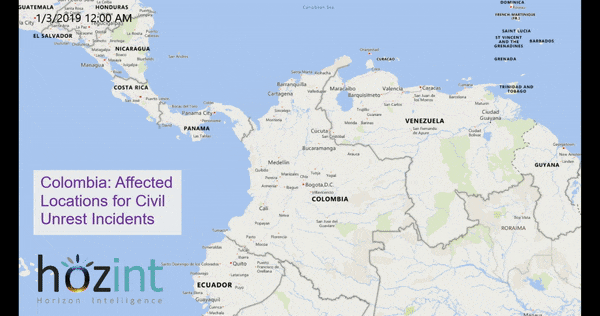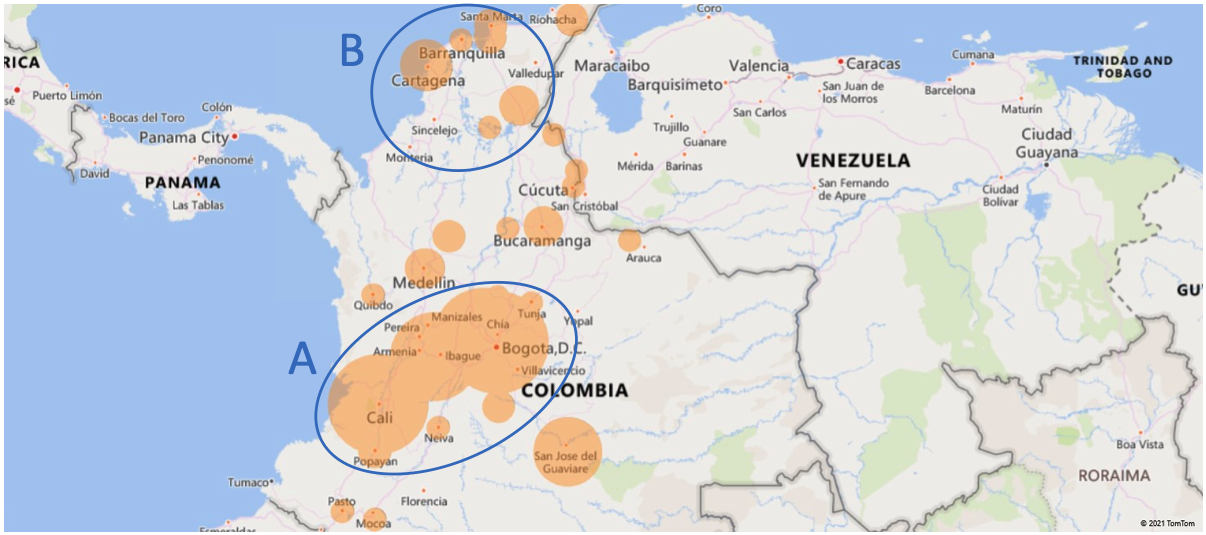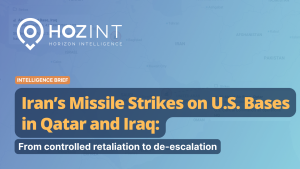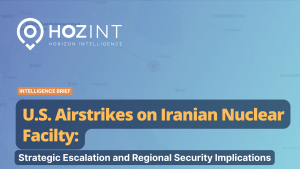Right before the COVID-19 pandemic kicked off in early 2020, Latin America was in turmoil and so was Colombia. The pension system, education, and labor reforms triggered episodes of civil unrest that were temporarily frozen due to the emergence of the health crisis. However, once the pandemic started to slow down thanks to vaccination, the underlying social conflict in Colombia was just waiting for a new triggering event to start again. Despite the pandemic, Colombia has experienced a consistent upward trend in protests, which reflects the underlying social resentment that trespasses the tax reform approved and swiftly reverted in early May 2021.
Faced with an increased public expenditure due to the pandemic, the Colombian government approved a fiscal reform that included mainly a tax increase to gather around USD 6,294 million and ensure monetary stability and international rating scores (1). This sparked a new series of protests, many of which were marked by violence. Although on May 2nd President Duque aborted the proposed fiscal reform, violent protests had already resulted in the death of 19 people (now more than 42, and more than 800 injured) (2). At this point, the National Strike Committee moved from demanding the tax reform to be reverted to a wider array of social, economic, and institutional reforms (3).
The main concern in this new phase of civil unrest in Colombia, as the graphic below shows, is the drastic increase in affected locations due to blockades and protests.

The current situation
Here is an overview of the concentration of blockades spread across the country, which coincide in a great extent with its demographic and economic distribution. The most affected departments are Bogotá, Valle del Cauca, Risalda, Guaviare, Cauca, Tolima, Cundinamarca, Antioquia, Bolívar, Atlántico, and Magdalena.
From a transport & logistic and economic perspective, we can draw the impact of civil unrest in two segments. The first comprised of the Cali-Pasto-Bogotá-Pereira segment (A), which holds the most important port facility in the country, the Buenavista Port, and near half of the coffee production of the country. The second, which is comprised of the Cartagena-Barranquilla-Bosconia-Cesar segment (B), hold the Cartagena Port (second in importance for coffee bean exports), most of the coffee production, and the most population-dense parts of the country.

Cali-Pasto-Bogotá-Pereira
Some of the most affected sectors are gas supply, food distribution, and coffee exports. Blockades in Buga, Jamundí, Florida, Tuluá, San Pedro, El Cerrito, Ginebra, Yumbo, Candelaria, Cartago, Bugalagrande, Guacarí, Dagua, La Paila, Yotoco, Pradera, Vijes, Zarzal, and Roldanillo, impede effective transportation from Cali through Bogotá, and Buenaventura, which is causing severe shortages of goods, increasing prices and generally deteriorating the security situation in the area.
Fuel and food shortages have been the first issue caused by the blocking of crucial logistic routes. The poultry industry, through FENAVI, reported that over 10 million birds have died due to the inability of trucks to deliver feeding material (4). Consequently, shortages in the supply of eggs and chicken meat are provoking price increases. Given the current situation, about 250 tons of poultry food are stuck and 120 million birds are at risk of dying of hunger.
Colombia is currently completing a coffee harvesting season, and blockades are impeding the arrival of goods into the Buenaventura Port, where looting has been reported already (5).
According to FEDECAFE, coffee producers have unable to transport their products in Huila, Valle del Cauca, Nariño, and Cauca into the Buenaventura Port, which is normally used to export 60% of the production (5).
The gas supply is also experiencing interruptions. The Gases de Occidente company announced a shortage of supply starting May 19th at noon (6). A spokesperson stated that the current public disorder and blockade situation impedes transportation from Buenaventura through Pasto and Cali.
Cartagena-Barranquilla-Bosconia-Cesar
More than 50% of coffee production is concentrated in this segment and over 20,000 sacks of green beans are stuck in Northern Antioquia and Santander (7), and 40% of the national production is exported through the Cartagena Port.
Mamonal and Turbaco, crucial access points South and East from Cartagena, continue to be blocked by activists (8, 9). The ANDI and FENDIPETROLEO business associations have requested public authorities to intervene in Bolívar to clear blocked routes (10, 11).
Barranquilla is also affected by highway blockades (12), particularly on the Pumarejo Bridge, Cartagena-Barranquilla highway (13).
Analysis and Forecast
After some time to allow the protests to continue unfolding and letting multiple sectors endure the severity of the security and economic situation, on May 18th, President Duque announced the deployment of security forces to clear all blocked routes nationwide. This announcement was followed by an immediate increase in clashes between ESMAD forces and demonstrators and arises two probable scenarios:
- The number of deceased, injured and arrested slightly increases in the next few days, and after a week or two, all routes across the country are cleared. The root cause of the current social conflict is not solved and leaves the possibility of new massive protests in the short term. We believe this to be the most likely scenario.
- Violence escalates while demonstrators endure the newly enforced security measures in the most strategic locations and effectively paralyze most of the economic activity in the country for some more weeks. At some point, the National Strike Committee demands President Duque’s resignation.
By Luis Campos Pérez – Political Risk & Threat Intelligence Analyst, Americas.




